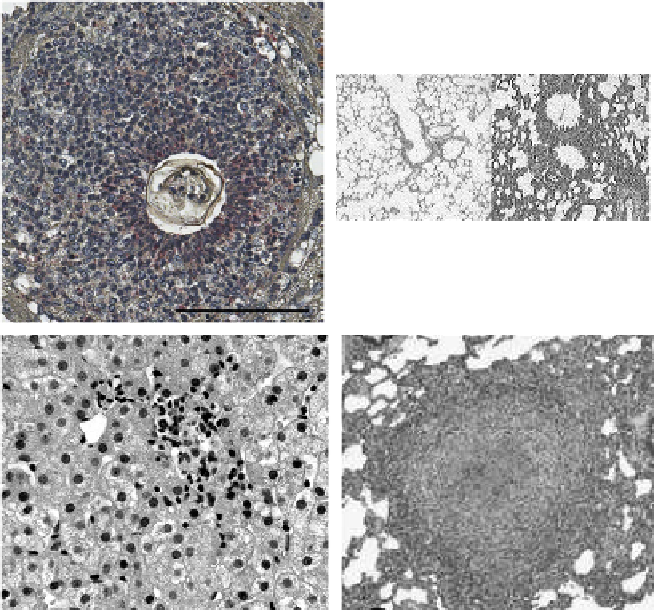Biology Reference
In-Depth Information
LIVER
(A)
(B)
LUNGS
Naive
Infected
(C)
(D)
FIGURE 4.4
Granulomas and immune reactions in the liver and lungs faced by
migrating larvae in a co-infected host. (A) shows a liver section from a C57BL/6 mouse
infected with Schistosoma japonicum containing a liver granuloma. The section was stained
with Leder stain and the scale bar represents 100
m
m (adapted from Burke et al. (2010) PLOS
neglected diseases e598). (B) shows lung sections from na¨ve (left panel) and day 15 RSV
infected (right panel) mice and stained with Periodic Acid Schiff stain to highlight mucous
production (adapted from
74
). (C) shows a section from a liver biopsy stained with
hematoxylin-eosin (40
objective) from a patient with chronic hepatitis B with immune cell
infiltration (adapted from Tokin et al. (2011) Quantitative morphometric analysis of liver
biopsy: problems and perspectives, Liver Biopsy, Hirokazu Takahashi (Ed.). (D) shows
a lung granuloma from a minipig 20 weeks post-infection with Mycobacterium tuberculosis.
The lung section was stained with hemotoxylin and eosin and image taken with 40
objective (Gil et al. (2012) PLOS One 5(4):e10030).
infected individuals. In asymptomatic RSV infection a Th1 response
prevails
72,73
with vigorous anti-viral CD8
T cell responses that inhibit
viral replication. Disease is associated with the development of Th2
responses, infiltration of eosinophils into the lungs and mucous pro-
duction (
Figure 4.4
B; for review see Graham et al.
74
). The impact of
RSV infection on the migration of Ascaris larvae is likely to depend on
þ


